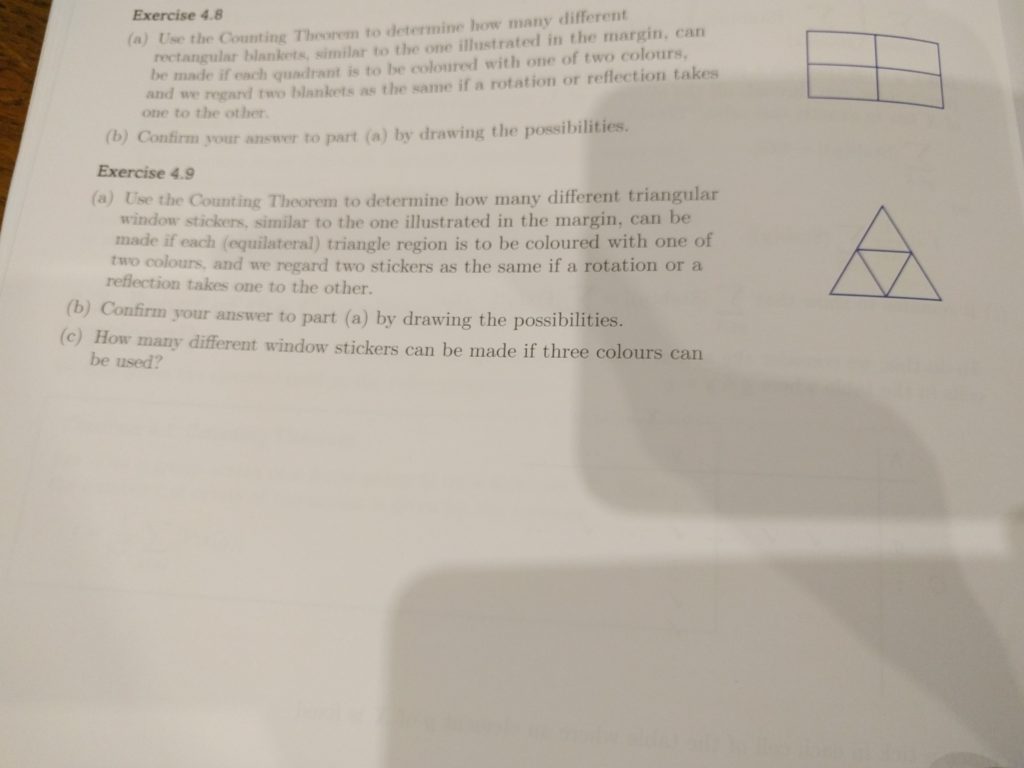My second assignment on groups was marked and returned. As predicted, there's a lot to take away from this.
Basic Groups
At this level it seems it's not sufficient to use notation like ![]() ,
, ![]() and
and ![]() to refer to subgroups. In my head, I know what the binary operator of these subgroups is but for the benefit of the reader the (better) convention is to be explicit with the binary operator:
to refer to subgroups. In my head, I know what the binary operator of these subgroups is but for the benefit of the reader the (better) convention is to be explicit with the binary operator: ![]() ,
, ![]() , and
, and ![]() specifically.
specifically.
Definition check: a cyclic group is just a group that contains a generator that generates the whole group. It doesn't have to "cycle" back to the beginning of the ordered set. eg, infinite sets can form a cyclic group under addition.
Mistakes in basic proofs. This one is a classic. With ![]() , I had to prove
, I had to prove ![]() was onto. My answer:
was onto. My answer:
![]()
Which I was all smug about because it looks pretty. But this is just the definition of the function being onto and I'd neglected to state the actual ![]() that always exists. Namely
that always exists. Namely ![]() .
.
Group Classification
Group decompositions can't be written as ![]() . It needs to be written as
. It needs to be written as ![]() . 3 and 15 are not coprime, so cannot be combined.
. 3 and 15 are not coprime, so cannot be combined.
Finite Groups
As a part of a group presentation, there are kind of identities like ![]() . However, for the most part in your answer, especially when you're talking directly about elements being in your group, they must always be in the form
. However, for the most part in your answer, especially when you're talking directly about elements being in your group, they must always be in the form ![]() (with
(with ![]() first).
first).
In being asked to deduce an isomorphism, I heavy-handedly defined both groups (as they were small) and then also stated a function explicitly that would define the isomorphism. Apparently it's just enough to state that both groups were of order 2. Therefore they're isomorphic.
I need to become a lot more familiar with the concept of centres of a group. To show that a subgroup is the centre of its parent group, I needed to show that the subgroups elements were centres of the subgroup. I was was just trying to wing it, and although I essentially got the answer right, I showed I had a complete misunderstanding of centres.

